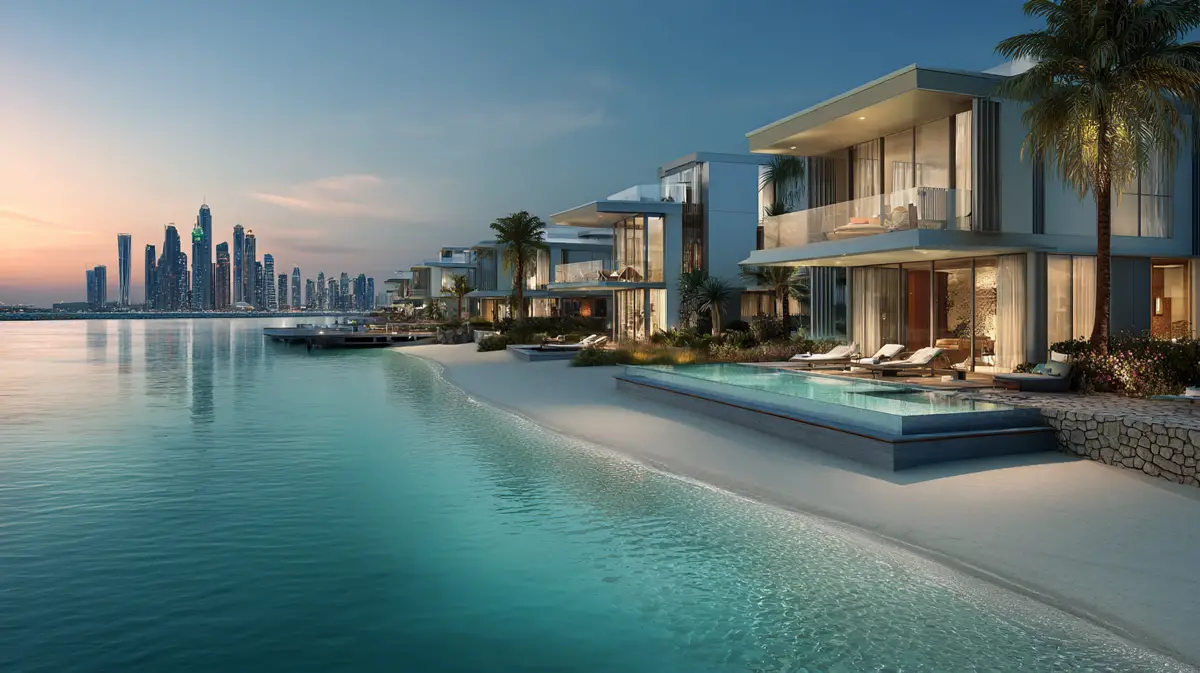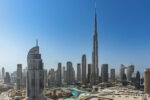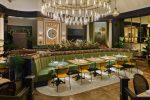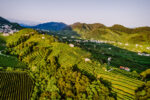Palm Jebel Ali Villas: What Buyers Can Expect
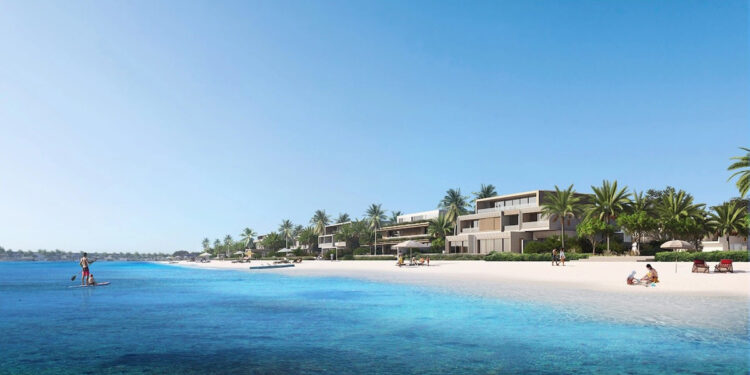
After year of delays and uncertainty Palm Jebel Ali is no longer a speculative vision. It’s a project that’s well and truly underway, and one that’s shaping into the most ambitious coastal community Dubai has attempted. Larger than Palm Jumeirah, this manmade island redefines scale. But more than that, it brings a shift in the way waterfront property is planned, built, and lived in. Palm Jebel Ali villas sit at the heart of this transformation, offering buyers a new standard of beachfront living defined by space, privacy, and long-term value.
For those eyeing a villa here, the offering is clear. Massive beachfront plots. Contemporary cutting edge architecture. A low-density master plan that values privacy over crowds. In many ways this isn’t an extension of Palm Jumeirah, it’s a departure from it.
The Two Villa Types That Matter
Plam Jebel Ali Villa buyers are presented with two main options: The Beach Collection and The Coral Collection. Both collections offer luxurious villas whilst also offering their own unique features and attributes.
The Beach Collection runs along the outer fronds. These are directly on the sand. No road, no promenade, just a clean line between your garden and the sea. These homes are wide, low-slung, and designed to maximise the horizon. Interiors follow a coastal palette. Light oak, open layouts, natural stone. Most have six or seven bedrooms, large entertaining areas, and outdoor space that feels more like a private resort.
The Coral Collection sits on the crescent. These homes are elevated and often enjoy uninterrupted views over the water and skyline. Architecture here is more sculptural. Think curves, glass, layered textures. Many designs feature internal courtyards and wraparound terraces. It’s less about direct beach access, more about open views and architectural presence.
Each villa type has its own model names such as Indigo Ocean, Hibiscus, Porcelain Rose. But what matters most and what really sets these apart is their footprint. These are not compact homes with exaggerated marketing. They are large, quiet, and expensive in every sens of the word.
Space. Not Just Size
Most Palm Jebel Ali villas begin at around 7,000 square feet. Larger ones go beyond 11,000. But it’s not just the internal area. It’s the land itself. Plots are deep and wide, particularly on the fronds. Many enjoy 18 to 20 metres of beachfront. That’s enough for a true sense of seclusion, even with neighbours nearby.
The floorplans are straightforward. Living areas are big but uncluttered. Staircases are sculptural without being showy. Kitchens connect to dining areas without awkward transitions. Upper floors have views, light, and private terraces. No gimmicks. Just function at a high level.
Design Without Noise
The style is mature. This isn’t marble on every surface or chandeliers in every room. You’ll find restraint. Clean edges. Soft materials. The focus is on light and proportion, not decoration.
These homes don’t beg for attention. They sit confidently. Interiors are understated and rely on space, not statement pieces. That’s intentional. Palm Jebel Ali is designed for long-term living, not quick resale or social media content.
Buyers looking for smart home integration, private wellness rooms, or custom-built home offices will find those options available. But the base specification is already high. What’s offered isn’t stripped down or compromised.
Access That Doesn’t Feel Remote
Palm Jebel Ali gives you room to breathe, but without isolation. There are roads on the trunk, as well as both ends of the crescent. Movement in and out is fast. Connectivity is part of the plan.
From most villas, you’re 25 minutes to the Marina, 30 to Downtown, and 15 to the new airport. For owners with yachts, access to the open sea is quick. For those with school-age children or business in the city, daily life remains practical.
This is important. Many island developments offer peace but little else. Palm Jebel Ali doesn’t trade access for calm. It offers both.
What Buyers Are Really Getting
This isn’t just about acquiring a large house by the sea. It’s about being early in one of the most valuable pieces of real estate Dubai will produce this decade.
Nakheel’s vision for the island goes beyond villas. There are plans for hotels, commercial zones, marinas, boardwalks, and a transport link. This will not remain a quiet construction site for long. It will be a fully realised district with its own identity.
Early buyers are already seeing value movement. But the long-term gains will likely come after the first handovers expected in 2027. As infrastructure arrives, so will publicity and further demand. The number of villas released is limited, which creates scarcity. And with Nakheel controlling the entire rollout, supply will stay tight.
Who This Is Really For
Unlike a large portion of off plan properties in Dubai, Palm Jebel Ali villas are not for buyers looking for something to hold and flip. Nor are they weekend homes for casual users. The price, the scale, and the location all point to a specific type of owner.
End users who want space, security, and calm. Investors with patience. Families ready to move away from density. Owners upgrading from Palm Jumeirah or Emirates Hills who want something with a longer horizon.
There’s also a growing class of buyers looking for architectural clarity. They’ve seen enough glass boxes. What Palm Jebel Ali offers is a slower rhythm. Still luxurious, still connected, but quieter and more sophisticated.
Conclusion
Whist obviously related, Palm Jebel Ali is not a sequel to Palm Jumeirah. It’s a clean start and the villas on offer reflect that. They’re larger, more refined, and planned within a framework that avoids the clutter of overbuilt beachfronts.
In many ways Palm Jebel Ali is an example of what Dubai’s next generation of coastal living is all about. It’s not just another costal community and a new place to live. It reflects a more grown-up, considered approach to life and development in Dubai.
